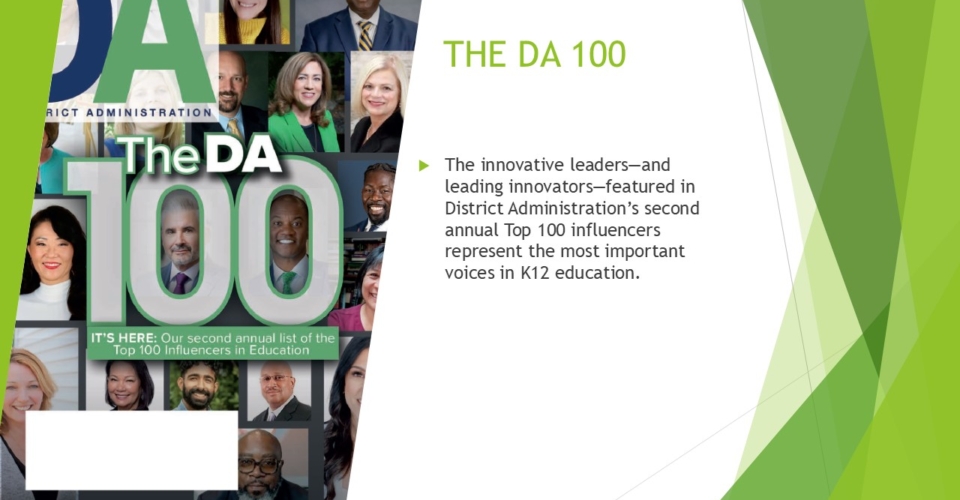Artificial intelligence is rapidly transforming how we work, communicate, and learn. For today’s students, AI is no longer a novelty—it’s an essential resource they’ll encounter throughout their educational journeys and professional careers.
Recent research confirms this reality: nearly half (46%) of students from ages 14-22 are already using AI for help with their schoolwork. More than half are using AI for brainstorming (51%) and getting information (53%), sometimes even without realizing it—like when they use Google or Bing to search.
The takeaway is clear: swimming against the tide of AI adoption will only hold students back from thriving in an AI-powered workforce. Instead, education leaders can focus on teaching students how to use AI critically, responsibly and effectively.
As we continue to integrate generative AI into curricula and teaching methods, we must also fundamentally rethink what it means to prepare students for a future powered by intelligent tools.
From restriction to responsibility
From brainstorming essay topics to coding apps to exploring career pathways, students are interacting daily with generative AI both inside and outside the classroom. We are no longer at the start of the AI era in education. We are already in it.
We must teach students to approach AI as a collaborative thinking tool, not a shortcut or unquestioned source of truth. As Professor Ethan Mollick, AI expert at the University of Pennsylvania, aptly put it in an interview: “Students who use AI as a crutch don’t learn anything. It prevents them from thinking. Instead, using AI as co-intelligence is important because it increases your capabilities and also keeps you in the loop.”
Truly AI-literate students can evaluate generated content critically just as they would any source, recognizing both capabilities and limitations—including biases and “hallucinations.”
Rather than letting AI do the thinking for them, students should be encouraged to engage with AI in ways that develop their ideas, not replace them. By challenging students to test and critique these systems, we empower them to understand why AI tools sometimes fail, as well as how to proceed thoughtfully when they do.
Creating AI-ready learning environments
AI has already begun supporting educators in powerful ways, from automating administrative tasks to personalizing learning experiences. According to the 2024 Savvas Educator Index, three-quarters of educators with AI training plan to use AI tools more this school year than last year.
A 2024 RAND Corporation study reinforces this shift, revealing that nearly 40% of English Language Arts and science teachers are already using AI in their instruction, with adoption continuing to grow.
As we continue to develop AI-enabled solutions for students, we can carry forward the same principles that have supported teachers: tools that enhance, not supersede, human insight and creativity. Learning solution providers should create AI tools that augment and support the invaluable role of the teacher in the classroom through:
- Scaffolding learning processes rather than simply providing answers
- Promoting transparency about how conclusions are reached over presenting information with false certainty
- Fostering collaboration without encouraging dependency
- Not replacing teachers’ critical role in the classroom, but creating more time for them to foster connection with their students
- Facilitating the accommodation of diverse learning needs, languages, and abilities
When designing these tools, we should ask: Does this solution help students think more deeply? Does it build their capacity for independent judgment? Does it prepare them for a world where AI is ubiquitous? Is it designed with safety and security as a priority, using trusted data?
AI fluency is the new career readiness
Across industries, AI is redefining how work gets done. Students entering the workforce will be expected to not only understand AI, but to use it confidently.
Whether they pursue college, technical training or go directly into the workforce, they’ll need to know how to collaborate with intelligent systems to strengthen what they bring to the table.
To meet this moment, educators can provide students with hands-on experience while developing the human skills that AI can’t replicate: creative problem-solving, ethical reasoning, interpersonal communication and the ability to ask thoughtful, strategic questions.
Students need practice interpreting AI outputs and making informed decisions based on AI-generated information. These higher-order skills—evaluation, synthesis and discernment—are precisely what will remain valuable as AI handles more routine cognitive tasks.
The path forward
The paradigm shift from viewing AI as a potential threat to embracing it as a powerful learning opportunity represents one of education’s most significant transitions. Preparing students for this AI-powered future will require thoughtful solution partners, well-defined learning objectives and carefully designed tools with clear pedagogical purpose.
Success in this new era won’t be measured by our ability to curb AI use, but by how well we equip students to engage with AI mindfully—understanding its capabilities, navigating its limitations and applying it with intention and integrity.
The future doesn’t belong to those who can simply use AI. It belongs to those who use it wisely to be productive and well-informed global citizens.



